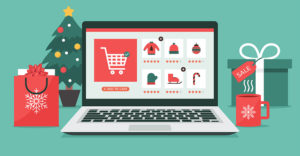The tides are turning in the consumers’ direction. New shifts in the consumer market solely based on their preferences have taken hold in the retail industry, especially in e-commerce, as personalized experiences are now an integral part of the customer journey.
In a larger context, personalization in 2023 will be more about brands tailoring their marketing campaigns to suit customers’ needs, becoming flexible, and letting users’ interests dictate market behavior. Brands that can meet their customers at this endpoint will be successful as they’ll gain an increase in revenue and drive stronger customer loyalty.
Retailers are quickly adopting personalization technologies to match consumers’ influence on the market. According to Statista, the estimated global revenue of customer experience personalization and optimization software will surpass US$9 billion. This projected spending on personalization technology further reaffirms the possibility of a much-improved omnichannel experience.
That said, the baseline of personalization still involves the consumer experience. Staying ahead of the trend is essential to make informed decisions. Expect the following three personalization trends to make an impact in 2023.
1. Artificial Intelligence Takes Center Stage
Only a handful of top retail brands like Amazon, eBay, Drinks, and Alibaba were early to the AI party and tailoring it to their customer journey. For example, eBay has its Shopbot, a personal assistant that helps consumers find the best deals. Many retailers are jumping on the AI bandwagon, with 96% of respondents to a PwC 2022 survey indicating they plan to implement AI in their business operations.
Furthermore, it won’t be a surprise to see companies leverage AI in facial recognition to provide a seamless omnichannel experience to customers. A good use case is AI using data from facial recognition technology to recommend products to users based on their facial attributes.
Currently, the facial recognition market is projected to grow to $12.67 billion by 2028 — and right now, it’s already picking up the pace in retail. Companies like Alipay (Alibaba) already have a head start with their “smile to pay” technology that accepts a picture of a customer’s face as a form of payment.
2. First-Party Data Becomes the Norm
Personalization will take a turn for the better in 2023, with stricter laws on the collection of consumer data.
For context, Apple’s new ATT privacy update allows users to decide whether they want their activities tracked. As a result, advertisers can’t use consumers’ data to run retargeted ads without their approval. Apple’s privacy initiatives are already taking a toll on advertisers, with Meta (formerly Facebook) reportedly suffering a loss of about $10 billion.
With this and other European laws on data privacy impacting marketers, it’s safe to assume that a crackdown on unauthorized data collection has just begun.
Meanwhile, companies unable to use third-party data now have a gap that needs to be filled. This development elevates first-party data to the position of anchor for personalization — and many marketers are already adopting it. First-party data is collected directly from customers via their experiences on the website or app.
A quick use case of first-party data includes using data points across shopping patterns, product preferences, location, and shopping history as key identifiers when personalizing user interactions.
The goal of first-party data is simply to get accurate insight into customer behavior to understand better why, how, and what motivates their decision-making process. This way, customers get a personalized experience without giving up their private information.
3. Brand Loyalty Goes Beyond Borders
It’s not news that businesses grow and drive more revenue by retaining existing customers versus acquiring new ones, which makes customer churn and retention a big deal. Traditional personalization can only work for so long before customers find a better deal somewhere else — the behavior shift during the pandemic proves this.
On the flip side, making customers part of the brand takes personalization to a new level. The average customer isn’t looking for discounts. They want a reward-based program that aligns with their needs or for a good cause. In a recent study, 90% of consumers say they’d likely choose a retailer where they hold a premium loyalty membership over another retailer offering lower prices.
Companies like Amazon were early drivers of the brand loyalty train. Amazon Prime, for instance, personalizes the entire shopping experience for customers with things like free and fast shipping, special offers, and a point-based reward system.
This trend is just catching on, but retailers are already moving toward adding personal touches and revamping their brand loyalty programs. The goal is to keep customers engaged and make them feel they’re part of a trusted community.
Conclusion
These personalization trends aim to improve customer experience on your business’s front and back end. While some can be challenging to implement, it’s critical to allow for possible alternatives to accommodate the ever-changing consumer market landscape.



















































Social Media
See all Social Media